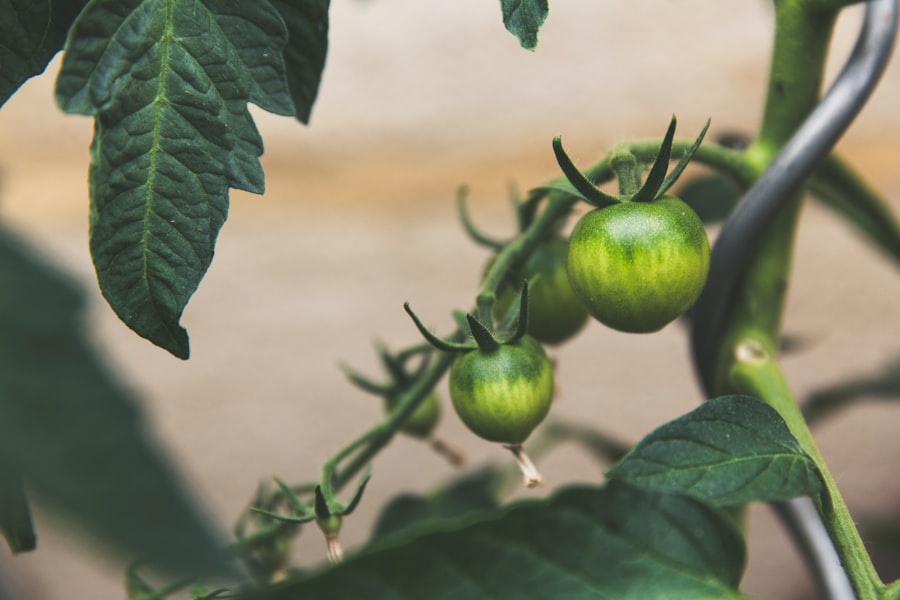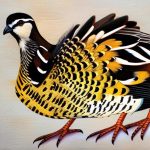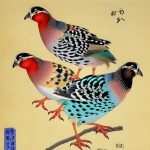Quail breeding is a popular and rewarding hobby for many people. Whether you are a seasoned quail breeder or just starting out, creating your own DIY quail breeding pens can be a fun and fulfilling project. By building your own pens, you have the freedom to customize the size, design, and materials to best suit your needs and the needs of your quail. Additionally, DIY quail breeding pens can be a cost-effective alternative to purchasing pre-made pens, allowing you to save money while still providing a safe and comfortable environment for your quail to thrive.
Breeding quail in DIY pens also gives you the opportunity to learn more about the breeding process and gain hands-on experience in caring for these unique birds. With the right materials, design, and maintenance, you can create a successful breeding environment for your quail and potentially even turn your hobby into a small business. In this article, we will explore the process of selecting materials, designing and building your DIY quail breeding pens, setting up the ideal breeding environment, maintaining and cleaning the pens, monitoring and managing the breeding process, and troubleshooting common issues that may arise. Whether you are a beginner or an experienced breeder, this guide will provide valuable insights and tips for creating and managing DIY quail breeding pens.
Table of Contents
- 1 Selecting the Right Materials for Your DIY Quail Breeding Pens
- 2 Designing and Building Your DIY Quail Breeding Pens
- 3 Setting Up the Ideal Environment for Quail Breeding
- 4 Maintaining and Cleaning Your DIY Quail Breeding Pens
- 5 Monitoring and Managing Quail Breeding in DIY Pens
- 6 Troubleshooting Common Issues in DIY Quail Breeding Pens
- 7 FAQs
- 7.1 What are DIY quail breeding pens?
- 7.2 What are the benefits of using DIY quail breeding pens?
- 7.3 What materials are commonly used to build DIY quail breeding pens?
- 7.4 Are there specific design considerations for DIY quail breeding pens?
- 7.5 Are there any legal considerations for building DIY quail breeding pens?
- 7.6 What are some tips for building DIY quail breeding pens?
Key Takeaways
- DIY quail breeding pens are a cost-effective way to raise quail for eggs or meat
- Select materials that are durable, easy to clean, and provide adequate ventilation for your DIY quail breeding pens
- When designing and building your DIY quail breeding pens, consider the space requirements for quail and incorporate features for easy access and maintenance
- Create an ideal environment for quail breeding by providing proper lighting, temperature control, and nesting areas in your DIY pens
- Regularly maintain and clean your DIY quail breeding pens to prevent disease and ensure the health and well-being of your quail population
Selecting the Right Materials for Your DIY Quail Breeding Pens
When it comes to building DIY quail breeding pens, selecting the right materials is crucial for creating a safe and comfortable environment for your quail. The first consideration is the type of material for the pen structure. Many breeders opt for wood or PVC for the frame of the pens, as these materials are durable and easy to work with. Additionally, wire mesh is essential for creating the walls of the pens, as it allows for proper ventilation while keeping the quail contained. It is important to choose a wire mesh with small enough gaps to prevent quail from escaping or predators from entering the pens.
For the flooring of the pens, materials such as sand, straw, or wood shavings can be used to provide a comfortable surface for the quail to walk on. It is important to avoid using wire flooring, as this can cause injury to the quail’s feet. Additionally, providing a sheltered area within the pen using materials such as plywood or plastic can give the quail a place to seek refuge from the elements. When selecting materials for DIY quail breeding pens, it is important to prioritize safety, durability, and comfort for the quail. By choosing high-quality materials, you can ensure that your pens will provide a suitable environment for successful quail breeding.
Designing and Building Your DIY Quail Breeding Pens
Designing and building DIY quail breeding pens requires careful planning and consideration of the specific needs of your quail. The size of the pens will depend on the number of quail you plan to breed, as well as the space available in your breeding area. It is important to provide enough space for each quail to move around comfortably and engage in natural behaviors such as dust bathing and foraging. Additionally, incorporating features such as perches and hiding spots can enrich the environment and promote natural behaviors in the quail.
When building the pens, it is important to ensure that the structure is secure and predator-proof. This may involve burying wire mesh underground to prevent digging predators from gaining access to the pens, as well as adding a secure roof to protect the quail from aerial predators. The design of the pens should also allow for easy access for cleaning and maintenance, with doors or removable panels for convenient entry. By carefully designing and building your DIY quail breeding pens, you can create a safe, comfortable, and functional environment for successful quail breeding.
Setting Up the Ideal Environment for Quail Breeding
Creating the ideal environment for quail breeding involves more than just building the pens – it also requires careful consideration of factors such as temperature, lighting, and nesting areas. Quail thrive in environments with moderate temperatures, so it is important to provide adequate ventilation in the pens while also protecting the quail from extreme heat or cold. Additionally, providing a consistent light cycle can help regulate the breeding behavior of the quail, with 14-16 hours of light per day being ideal for stimulating egg production.
Nesting areas are also crucial for successful quail breeding, as they provide a safe and comfortable space for the quail to lay their eggs. This can be achieved by incorporating nesting boxes or shelters within the pens, filled with soft bedding material such as straw or wood shavings. By creating a suitable nesting environment, you can encourage natural breeding behaviors in your quail and increase the likelihood of successful egg production. Overall, setting up the ideal environment for quail breeding involves careful attention to detail and a focus on providing a comfortable and stimulating environment for your birds.
Maintaining and Cleaning Your DIY Quail Breeding Pens
Maintaining and cleaning DIY quail breeding pens is essential for ensuring the health and well-being of your quail. Regular maintenance tasks may include checking for any damage to the pens, replacing bedding material, and ensuring that food and water sources are clean and accessible. Additionally, regular cleaning of the pens is crucial for preventing the buildup of waste and bacteria that can lead to health issues for the quail.
Cleaning tasks may include removing soiled bedding material, scrubbing surfaces with a mild disinfectant, and ensuring that waterers and feeders are free from contamination. It is important to establish a regular cleaning schedule to ensure that maintenance tasks are consistently carried out. By maintaining clean and hygienic conditions in your DIY quail breeding pens, you can help prevent disease and promote overall health in your quail flock.
Monitoring and Managing Quail Breeding in DIY Pens

Monitoring and managing quail breeding in DIY pens involves keeping a close eye on the behavior and health of your quail flock. This may include observing mating behaviors, monitoring egg production, and keeping track of any signs of illness or injury. By regularly checking on your quail and noting any changes in behavior or appearance, you can quickly address any issues that may arise and ensure that your birds remain healthy and content.
Managing quail breeding also involves keeping track of breeding records, such as egg production rates and hatch rates. This information can be valuable for identifying trends in breeding success and making informed decisions about managing your quail flock. Additionally, being attentive to factors such as diet, lighting, and environmental conditions can help optimize breeding success in your DIY pens. By actively monitoring and managing quail breeding in your DIY pens, you can maximize the potential for successful breeding outcomes.
Troubleshooting Common Issues in DIY Quail Breeding Pens
Despite careful planning and maintenance, it is not uncommon for issues to arise in DIY quail breeding pens. Common issues may include egg binding in hens, aggression between birds, or low hatch rates. When troubleshooting these issues, it is important to first identify the underlying cause by observing the behavior of your quail and assessing environmental conditions.
For example, egg binding may be caused by inadequate calcium levels in the diet or stress in the hen. Addressing these factors through dietary adjustments or environmental enrichment can help alleviate this issue. Similarly, aggression between birds may be a result of overcrowding or inadequate space within the pens. By addressing these factors through pen redesign or reducing flock size, you can help minimize aggression and promote harmonious interactions between your quail.
Low hatch rates may be influenced by factors such as temperature fluctuations or inadequate nesting areas. By carefully monitoring environmental conditions and providing suitable nesting environments, you can increase the likelihood of successful hatching in your DIY pens. Overall, troubleshooting common issues in DIY quail breeding pens involves careful observation, problem-solving, and a proactive approach to addressing potential challenges.
In conclusion, creating DIY quail breeding pens is an exciting opportunity to customize an environment that meets the specific needs of your quail flock while also providing a rewarding experience for breeders. By carefully selecting materials, designing functional pens, setting up ideal breeding environments, maintaining cleanliness, monitoring breeding progress, and troubleshooting common issues, breeders can create successful DIY quail breeding operations that promote healthy bird populations while also providing valuable learning experiences.
If you’re interested in DIY quail breeding pens, you might also want to check out Poultry Wizard’s article on 10 Essential Tips for Building a Chicken Coop. This informative piece provides valuable insights into creating a safe and comfortable environment for your poultry.
FAQs
What are DIY quail breeding pens?
DIY quail breeding pens are homemade enclosures designed to house and breed quail. These pens are typically constructed using simple materials and can be customized to fit the specific needs of the quail breeder.
What are the benefits of using DIY quail breeding pens?
DIY quail breeding pens allow quail breeders to have more control over the breeding environment, including factors such as space, temperature, and cleanliness. They also provide a cost-effective alternative to purchasing pre-made breeding pens.
What materials are commonly used to build DIY quail breeding pens?
Common materials used to build DIY quail breeding pens include wood, wire mesh, PVC piping, and hardware such as hinges and latches. These materials are relatively inexpensive and readily available at hardware stores.
Are there specific design considerations for DIY quail breeding pens?
When designing DIY quail breeding pens, it is important to consider factors such as ventilation, predator protection, ease of cleaning, and space requirements for the quail. Additionally, pens should be designed to allow for easy access for feeding, watering, and egg collection.
Are there any legal considerations for building DIY quail breeding pens?
Quail breeding is subject to regulations and permits in some areas, so it is important to check local laws and regulations before building DIY quail breeding pens. Additionally, it is important to ensure that the pens provide a suitable and humane environment for the quail.
What are some tips for building DIY quail breeding pens?
When building DIY quail breeding pens, it is important to plan the design carefully and consider the specific needs of the quail. It can be helpful to consult with experienced quail breeders or research best practices for quail housing and breeding. Additionally, attention to detail and quality construction will contribute to the success of the pens.
Meet Walter, the feathered-friend fanatic of Florida! Nestled in the sunshine state, Walter struts through life with his feathered companions, clucking his way to happiness. With a coop that’s fancier than a five-star hotel, he’s the Don Juan of the chicken world. When he’s not teaching his hens to do the cha-cha, you’ll find him in a heated debate with his prized rooster, Sir Clucks-a-Lot. Walter’s poultry passion is no yolk; he’s the sunny-side-up guy you never knew you needed in your flock of friends!







